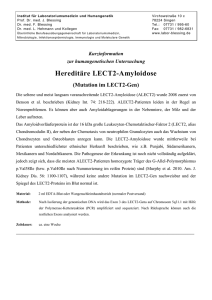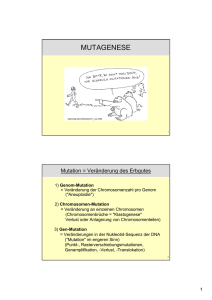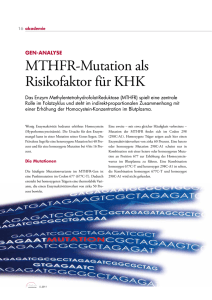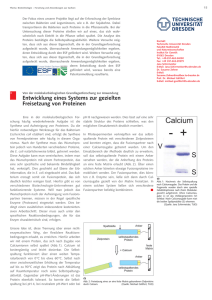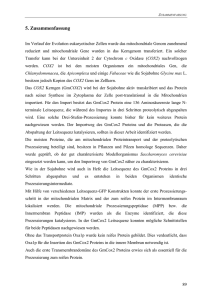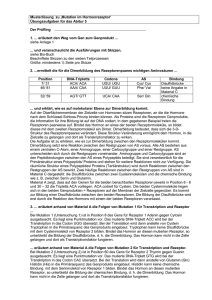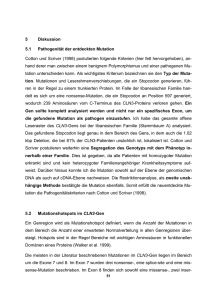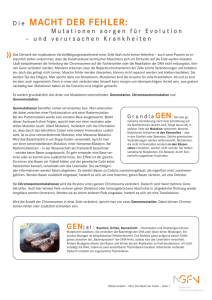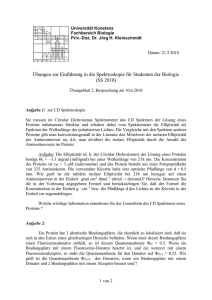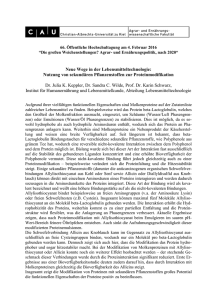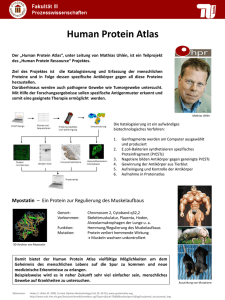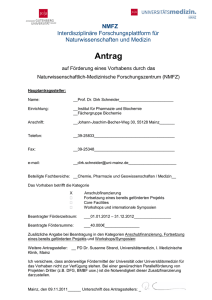ABSTRACT
Werbung
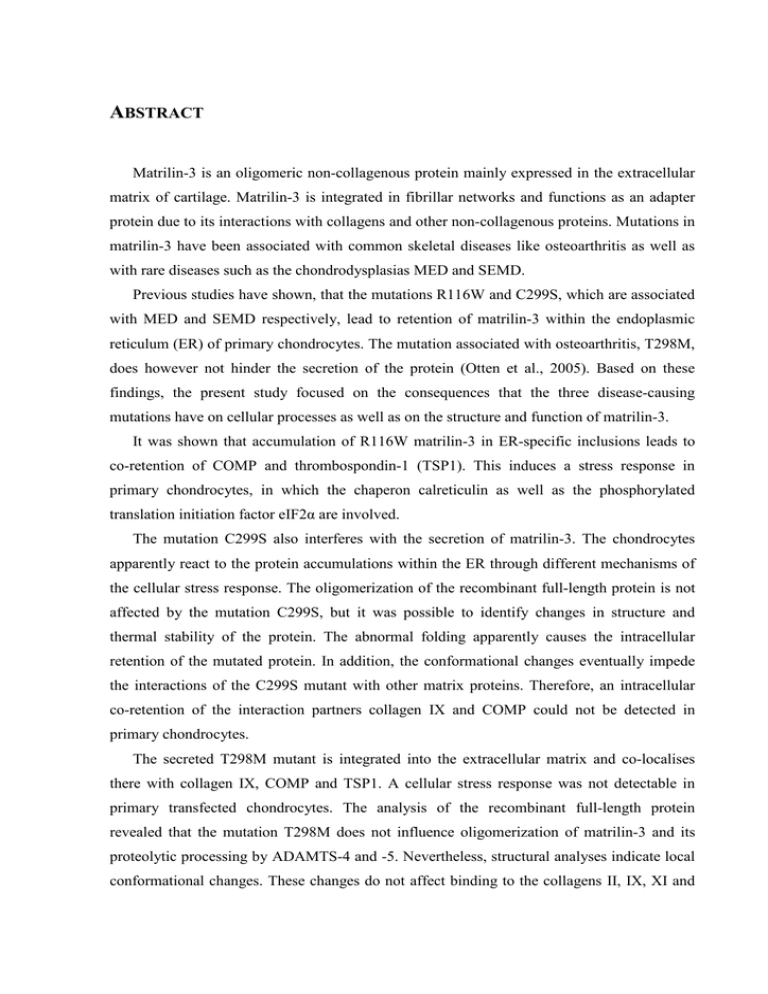
ABSTRACT Matrilin-3 is an oligomeric non-collagenous protein mainly expressed in the extracellular matrix of cartilage. Matrilin-3 is integrated in fibrillar networks and functions as an adapter protein due to its interactions with collagens and other non-collagenous proteins. Mutations in matrilin-3 have been associated with common skeletal diseases like osteoarthritis as well as with rare diseases such as the chondrodysplasias MED and SEMD. Previous studies have shown, that the mutations R116W and C299S, which are associated with MED and SEMD respectively, lead to retention of matrilin-3 within the endoplasmic reticulum (ER) of primary chondrocytes. The mutation associated with osteoarthritis, T298M, does however not hinder the secretion of the protein (Otten et al., 2005). Based on these findings, the present study focused on the consequences that the three disease-causing mutations have on cellular processes as well as on the structure and function of matrilin-3. It was shown that accumulation of R116W matrilin-3 in ER-specific inclusions leads to co-retention of COMP and thrombospondin-1 (TSP1). This induces a stress response in primary chondrocytes, in which the chaperon calreticulin as well as the phosphorylated translation initiation factor eIF2α are involved. The mutation C299S also interferes with the secretion of matrilin-3. The chondrocytes apparently react to the protein accumulations within the ER through different mechanisms of the cellular stress response. The oligomerization of the recombinant full-length protein is not affected by the mutation C299S, but it was possible to identify changes in structure and thermal stability of the protein. The abnormal folding apparently causes the intracellular retention of the mutated protein. In addition, the conformational changes eventually impede the interactions of the C299S mutant with other matrix proteins. Therefore, an intracellular co-retention of the interaction partners collagen IX and COMP could not be detected in primary chondrocytes. The secreted T298M mutant is integrated into the extracellular matrix and co-localises there with collagen IX, COMP and TSP1. A cellular stress response was not detectable in primary transfected chondrocytes. The analysis of the recombinant full-length protein revealed that the mutation T298M does not influence oligomerization of matrilin-3 and its proteolytic processing by ADAMTS-4 and -5. Nevertheless, structural analyses indicate local conformational changes. These changes do not affect binding to the collagens II, IX, XI and COMP, but have a major impact on the in vitro fibrillogenesis of the collagen II/IX/XI heterofibrils. In contrast to the mutations R116W and C299S, which constrain chondrocyte function as a result of the intracellular protein accumulation, effects of the mutation T298M occur apparently extracellular through a modified collagen fibrillogenesis. ZUSAMMENFASSUNG Matrilin-3 ist ein oligomeres nicht kollagenes Protein der Extrazellulärmatrix des Knorpels. Matrilin-3 integriert in fibrilläre Netzwerke und fungiert aufgrund seiner Interaktionen mit Kollagenen und anderen nicht kollagenen Proteinen als Adapterprotein. Mutationen in Matrilin-3 wurden mit skeletalen Krankheiten wie Arthrose und den Chondrodysplasien MED und SEMD assoziiert. Eigene Vorarbeiten haben gezeigt, dass die mit MED beziehungsweise SEMD assoziierten Mutationen R116W und C299S eine Retention von Matrilin-3 im endoplasmatischen Retikulum (ER) primärer Chondrozyten verursachen, während die mit Arthrose assoziierte Mutation T298M die Sekretion des Proteins nicht beeinträchtigt (Otten et al., 2005). Aufbauend auf diesen Erkenntnissen wurden in dieser Arbeit die Auswirkungen der drei krankheitsrelevanten Mutationen auf zelluläre Prozesse sowie die Struktur und Funktion von Matrilin-3 untersucht. Es konnte gezeigt werden, dass die Akkumulation von R116W Matrilin-3 in ER-spezifischen Einschlüssen zur Co-Retention von COMP und Thrombospondin-1 (TSP1) führt. Dadurch wird in primären Chondrozyten eine Stressreaktion ausgelöst, an der das Chaperon Calreticulin sowie der phosphorylierte Translationsinitiationsfaktor eIF2α beteiligt sind. Die Mutation C299S behindert ebenfalls die Sekretion von Matrilin-3. Offenbar reagieren die Chondrozyten auf die Proteinakkumulationen im ER jedoch über andere Mechanismen der zellulären Stressantwort. Die Oligomerisierung des rekombinanten Volllängenproteins wird durch die Mutation C299S nicht beeinträchtigt. Es zeigten sich jedoch strukturelle Veränderungen und eine damit einhergehende thermisch nicht aufzulösende Stabilität des Proteins. Diese Fehlfaltungen sind offenbar ursächlich für die intrazelluläre Retention des mutierten Proteins. Die Konformationsänderungen behindern möglicherweise auch die Bindung der C299S Mutante an andere Matrixproteine, weshalb in transfizierten Chondrozyten keine intrazelluläre Co-Retention der Bindungspartner Kollagen IX und COMP beobachtet wurde. Die sekretierte T298M Mutante wird in das extrazelluläre Netzwerk integriert und co-lokalisiert dort mit Kollagen IX, COMP und TSP1. In transfizierten primären Chondrozyten war keine Stressreaktion nachweisbar. Außerdem ergab die Analyse des rekombinanten Volllängenproteins keinen Einfluss der Mutation T298M auf die Oligomerisierung von Matrilin-3 und seine Prozessierung durch die Proteasen ADAMTS-4 und -5. Strukturelle Untersuchungen deuten jedoch auf lokale Konformationsänderungen hin. Diese beeinträchtigen zwar nicht die Bindung an die Kollagene II, IX und XI sowie COMP, haben aber in vitro einen großen Einfluss auf die Fibrillogenese der Kollagen II/IX/XI Heterofibrillen. Im Gegensatz zu den Mutationen R116W und C299S, welche durch die intrazelluläre Proteinakkumulation die Funktionalität der Chondrozyten einschränken, manifestieren sich die Auswirkungen der Mutation T298M offensichtlich extrazellulär durch eine veränderte Kollagenfibrillogenese.
